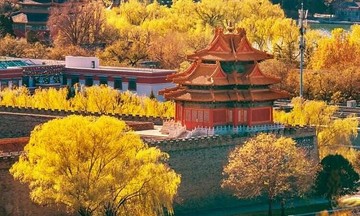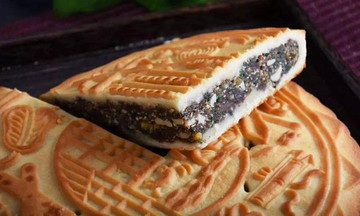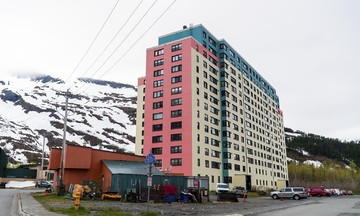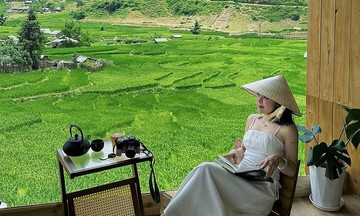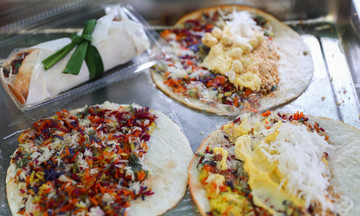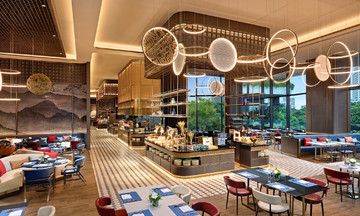In the fishing village nestled amidst the Se San 4 reservoir in Ia Toi commune, Quang Ngai province, dried anchovies are laid out to dry along the banks and atop fish farming rafts. After a day in the sun, the villagers harvest the dried freshwater anchovies, a well-known specialty of the Central Highlands fishermen.
 |
Nguyen Thanh Nhan drying freshwater anchovies on a large net. Photo: Thao Vy
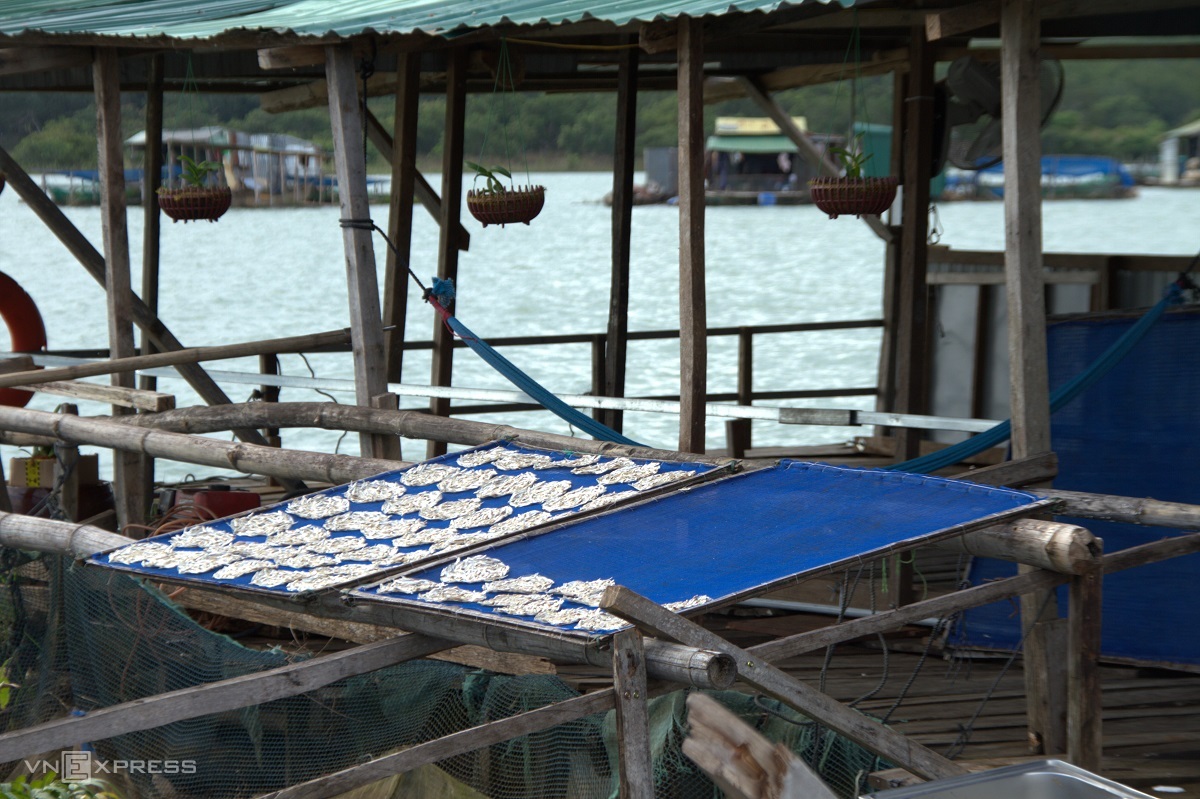 |
Anchovies drying on aquaculture rafts in the Se San 4 reservoir. Photo: Thao Vy
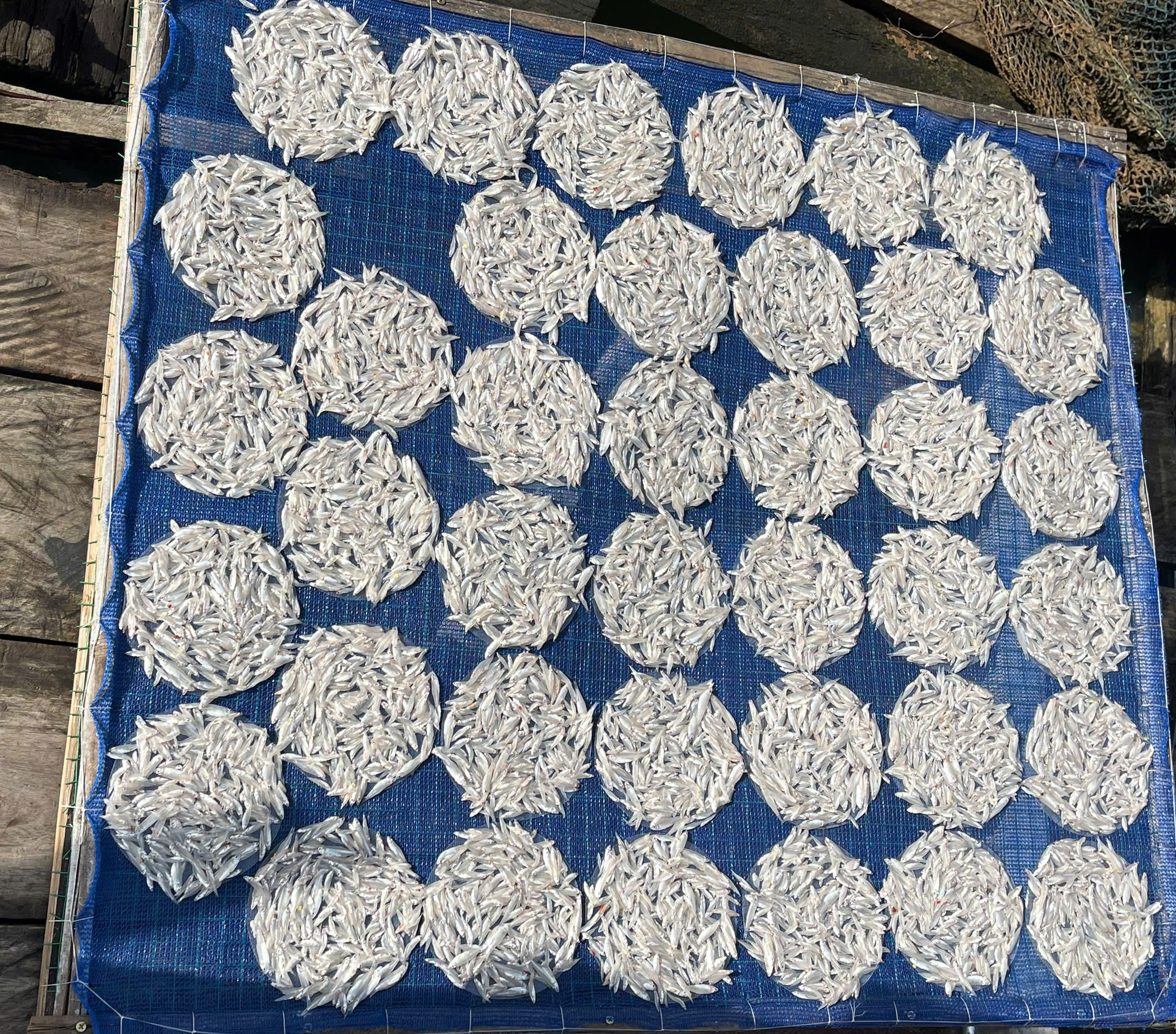 |
Anchovies are collected after drying in the sun. Photo: Thao Vy
When people think of anchovies, they often picture the small fish found in the ocean. The freshwater anchovy (Corica laciniata) surprises many upon first hearing of it. This tiny fish, belonging to the herring family, lives mainly in the rivers and reservoirs of Southeast Asia, typically swimming in schools near the surface and feeding on plankton.
People in the southwestern region of Vietnam have long been catching and processing freshwater anchovies in the Hau and Tien rivers, two main branches of the Mekong. Around 2010, when the Se San 4 hydropower project began, people from Ca Mau, An Giang, Long An, and other provinces, hearing of the abundance of fish in the reservoir, came to establish villages, bringing their river-based livelihoods with them.
Arriving in Se San 14 years ago, 43-year-old Nguyen Thanh Nhan noticed the abundance of fish in the river, similar to the Mekong Delta region, with species like pangasius, eel, loach, and perch. However, the fish that has made the area famous is the river anchovy.
According to Nhan, the river anchovy grows to a maximum length of about 7 cm, smaller than its saltwater counterpart. Its body is translucent white, its belly an opaque white like a grain of rice, and its flesh is sweeter and more fragrant than ocean anchovies. Instead of using nets like those in the Mekong Delta, Se San residents primarily use fishing traps and scoop nets to catch these fish.
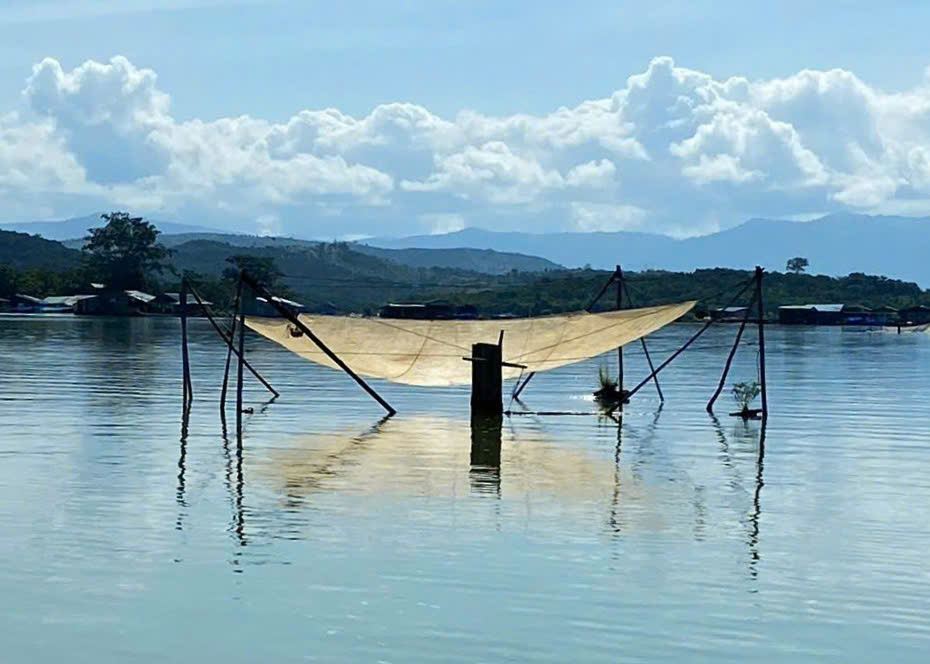 |
Fishing traps used for catching freshwater anchovies in the Se San reservoir. Photo: Thao Vy
 |
Anchovies harvested from the river traps. Photo: Thao Vy
 |
Traps overflowing with anchovies. Photo: Thao Vy
To use the fishing traps, people choose a spot in the middle of the reservoir and stretch a wide net, securing the four corners with bamboo or wooden poles driven deep into the reservoir bed. Around 4-5 PM, they set up lights to attract the fish. Between 3-4 AM the following morning, they return to collect the fish caught in the traps.
With years of experience fishing with traps, 37-year-old Dinh Thi Nhe says her family owns 15 traps, harvesting 30-40 kg of fresh anchovies daily. After drying, this yields about 2-3 kg, bringing in an income of 200,000 to 400,000 VND per day.
Scoop netting is also a common fishing method. A net is attached to two bamboo poles, adjusted to the size of the boat, and placed at the bow to scoop fish from the surface on calm days.
The fish are brought back to the houseboats and washed. Some are sun-dried and sold as dried fish, while others are marinated with spices like shallots, MSG, and salt, then spread on rice paper and sun-dried to create a specialty product: anchovy rice paper crackers.
Dried anchovies sell for 120,000-150,000 VND per kg. Anchovy rice paper crackers range from 3,000 to 5,000 VND each, depending on their quality.
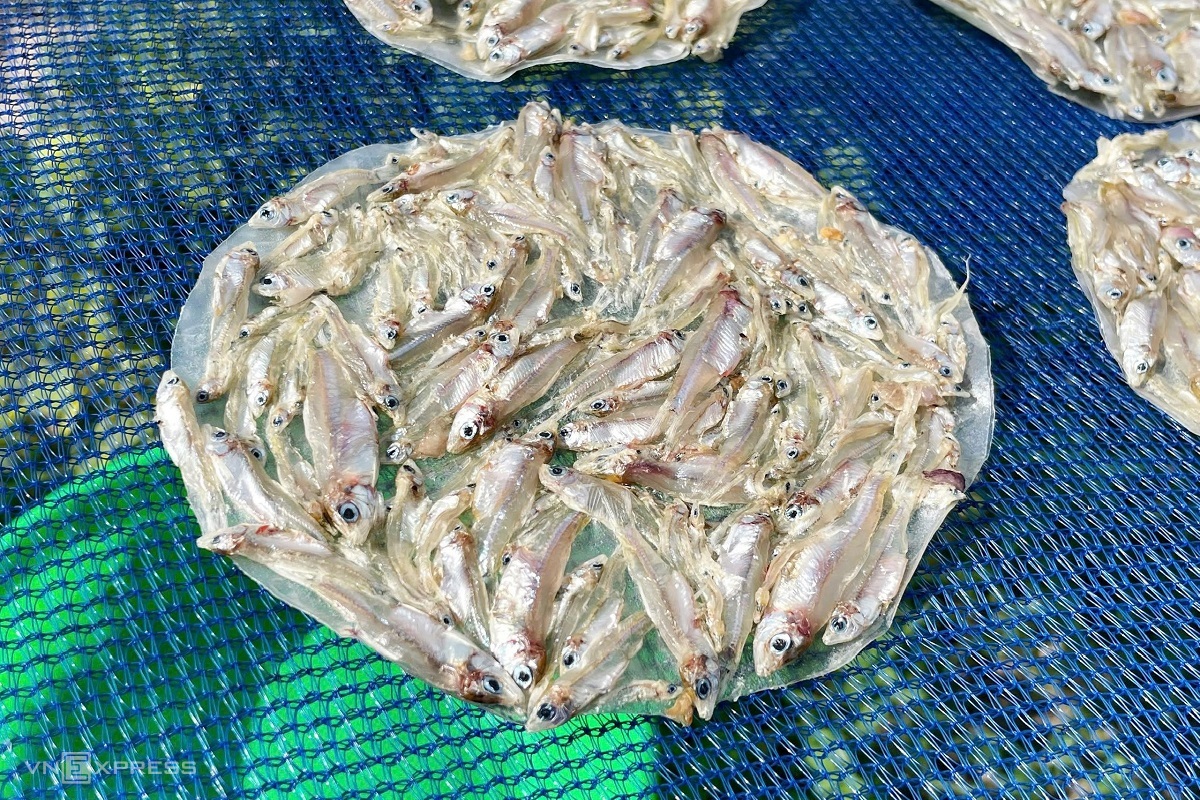 |
Freshwater anchovy rice paper crackers from the Se San river. Photo: Thao Vy
The process of making dried anchovies and anchovy rice paper crackers is entirely handmade. From preparation and sun-drying to the spreading and drying of the crackers, every step relies on skillful hands and generations of experience, resulting in products with a rustic flavor characteristic of the fishing village.
The dried anchovies and crackers are vacuum-packed and can be stored for over a month, or longer if refrigerated.
Dried anchovies are often simmered in sweet and savory sauces, tamarind sauce, or stir-fried with chili, making for flavorful dishes that go well with rice. The rice paper crackers can be grilled or fried and eaten with fresh herbs and a chili-garlic fish sauce dip, a truly rustic snack. They also make a popular appetizer with drinks.
Having won over diners both locally and further afield, the anchovy trade in the Se San 4 reservoir has become a stable livelihood for the villagers. Around 20 households in the village currently continue this tradition.
Along with anchovies, the villagers farm, fish, and process other aquatic species, combined with community-based tourism on the reservoir, attracting numerous visitors.
Thao Vy



